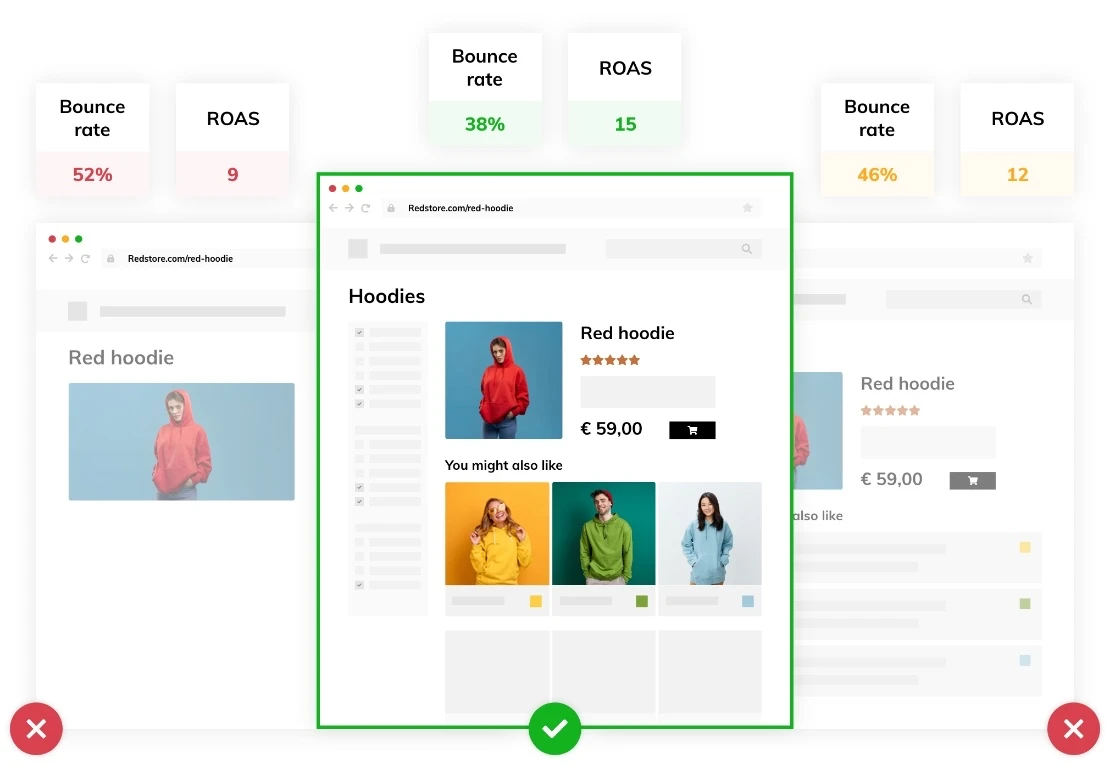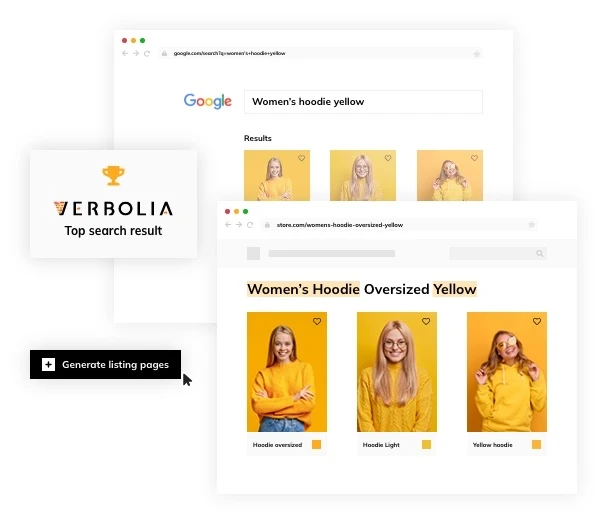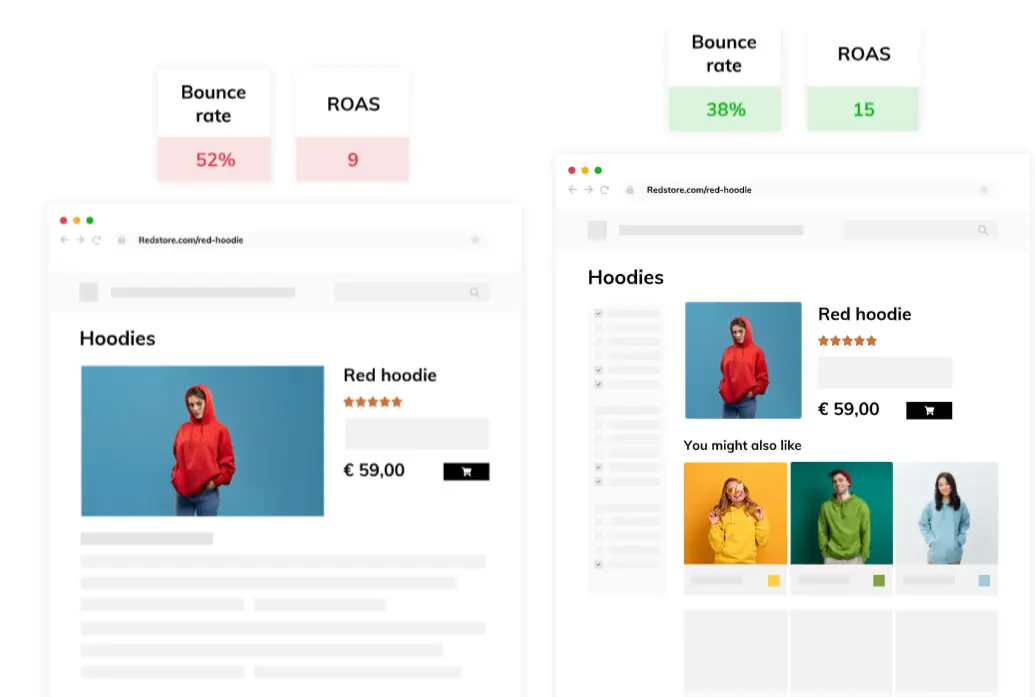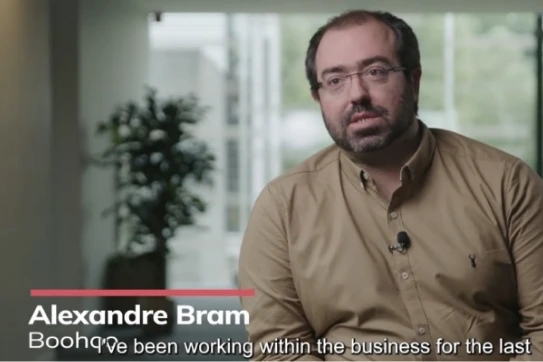Supercharge
Boost your organic traffic and conversion rates with our specialised SEO and Paid Acquisition technology solutions

Solution for Paid Acquisition
With Vmax, turn your product pages into landing pages. Let us automatically discover the best performing landing page for each product.
Solution for SEO
Discover long-tail keywords, build optimised pages at scale, and increase your non-branded organic visits by 30%
Unlock Your E-Commerce Potential
Explore our key product features

Vmax (Paid Acquisition )
Optimal Layout Discovery
Vmax transforms product pages into high-converting landing pages by testing and optimizing layout variations. It collects user interaction and automatically finds the layouts that perform best with your audience, ensuring continuous improvement without the manual workload.
Increased Conversion Rates
By dynamically adjusting layouts and product suggestions based on visitor behavior, Vmax significantly elevates conversion rates and ROAS, transforming browsing into buying.
Effortless Implementation
Vmax simplifies setup with no internal IT involvement required. Easily import your product catalog and let Vmax automatically test and refine your landing pages.

Keyword pages (SEO)
Find untapped long-tail keywords
Verbolia parses your product catalog to identify long-tail keywords, which have the potential to significantly boost traffic to your website.
Launch pages in a few clicks
Easily launch new pages by uploading a list of keywords. For each keyword, Verbolia will retrieve relevant products from your catalog and build a page.
Boost your organic traffic
Every new page targets a precise long-tail search, offering search engines an ideal response for transactional queries, giving you an edge over competitors lacking long-tail keyword pages.

Linking engine (SEO)
Dynamic Contextual Linking
Our system analyzes each page’s content, keywords, and lexical field, automatically embedding links that enrich your site’s contextual relevance and user experience.
Flexible Link Management
Control link placement by creating rules based on H1 tags, meta titles, URLs, or custom criteria, including prioritization and link density.
Easy-to-Install Technology
Choose from server-side API integration for a tailored backend solution or a simple, one-line JavaScript for instant client-side implementation, both offering seamless integration.
We take care of the technical aspects
You get the benefits
No need for IT team
Take control without IT complexities. Enjoy full autonomy as our solution empower you to make impactful changes hassle-free, freeing you from technical dependencies.
Improve user experience
Enhance your product discoverability through optimized long-tail keyword pages and improved conversion rates via tailored Google Shopping landing pages.
Increase ROI for SEO and Paid campaigns
Increase revenue by optimising your product detail pages, reducing frustration, driving better results and higher ROAS.
Video testimonials
Boohoo’s skyrocketing traffic
Verbolia helped Boohoo achieve a 7-figure extra revenue by generating thousands of SEO optimized pages of which 70% rank in Google’s top 10.
Featured
How did Boohoo succeed?
Alexandre Bram, Head of SEO at Boohoo, explains how they scaled organic traffic to a new level. Learn how Boohoo overcame its platform limitations and now seamlessly builds product listing pages that are automatically linked to their category pages.
Want to know more about Verbolia and Boohoo?
Read the case studyAdevinta
Discover Verbolia through the lens of Esteve Castells, Head of Global SEO at Adevinta.
Decathlon
Join Loïc Hélias, the Head of SEO of Decathlon, as he discusses their collaboration with Verbolia.
Ripley Chile
Explore the perspective of Toncy Dunlop, Ripley’s SEO Manager, on how Verbolia drives results.
















